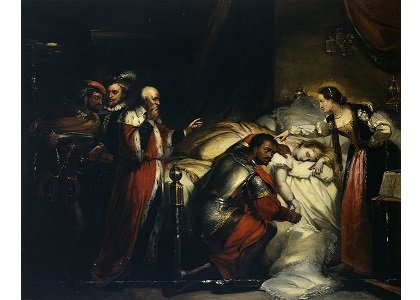NEW YORK (CNN) — The Metropolitan Opera will debut a fresh face in its season-opening production of Verdi’s “Otello” in September.
For the first time on the famed New York stage, the actor who portrays the work’s titular character will perform without blackface makeup.
It’s a break with tradition for the company, which has been staging the production with white actors playing the protagonist in dark makeup for over 100 years.
“The decision to have no makeup at all was made during the process of planning of the production,” the company said in a statement. “Although the central character of Otello is a Moor from North Africa, the Met is committed to color-blind casting, which allows the best possible singers to perform any role, regardless of their racial background.”
Based on Shakespeare’s “Othello,” the opera was composed in the late 19th century by Giuseppe Verdi and first performed by the Met in 1891. Though theater productions of Shakespeare’s play had since dropped the use of dark makeup to transform an actor into the titular Moor, opera companies have continued its use into the 21st century, including in the Met’s latest staging of the work in 2012.
In the spring, a promotional mailer from the company advertising the upcoming production drew small ire for its glossy photo of Latvian tenor Aleksandrs Antonenko, who will play Otello, in heavy bronze makeup, according to Lee Abrahamian, a press officer.
Though evidently preceding a change of heart, the company says the response, approximately a dozen emails and a crackling on social media, did not influence the decision and that the photos were shot in January, “before the creative team had conceived the look of the production.”
The face of its lead is not the only aspect of the opera to get an update, under director Bartlett Sher. In a video posted online previewing the show, Bartlett says the staging will take place in the late 19th century, a departure from its written era, and describes the “epic grandeur” of the set design, which will include towering walls of glass that shift and interlink.
“The engineering feats and capacity of the Met will be challenged by this particular set,” Sher said.
The shift in a medium steeped in tradition comes as a national conversation has uprooted other remnants of American history seen as racist, such as the Confederate flag, and could represent more of a necessity than a merit in today’s environment of political correctness.
To quote the play’s nihilistic antagonist Iago, “Virtue? A fig! ‘Tis in ourselves that we are thus or thus.”
“Opera has this long history of exoticism and portraying the other,” said Naomi André, co-editor of “Blackness in Opera” and a musicologist and associate professor in Women’s Studies, Afroamerican and African Studies and the Residential College at the University of Michigan. “Sadly, opera has a big history of representing the other in makeup,” she said, noting roles such as Otello and Aida, as well as Asian characters as in Puccini’s “Madame Butterfly.”
Casting for opera companies is a complex issue, André says, with access to training for minorities a major factor, as well as fears of producers in the past of having a black man on stage with a white woman.
There is also, of course, the requirement of immense talent.
But André is hopeful that this significant shift from the “standard-bearer” Met will be a harbinger of change at other opera houses.
“I think we’re finally in the time where people are saying, ‘Whoa, wait a minute. This doesn’t happen in any other dramatic arena,’ ” André said. “I think [for] opera audiences, it’s just been a little slower.”
The-CNN-Wire
™ & © 2015 Cable News Network, Inc., a Time Warner Company. All rights reserved.
